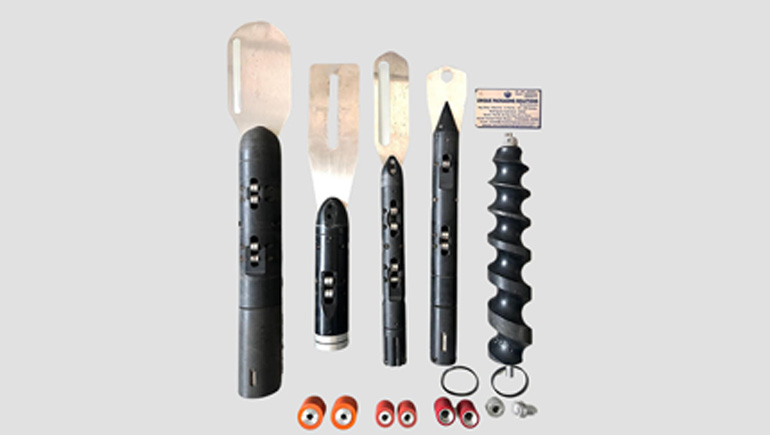Machine Specific Size Parts
Revolutionizing Efficiency in the Modern Workplace
In today’s fast-paced manufacturing & packaging industries, the products are packed in different volumes & sizes based on the shelf life, market demand and customer needs.
Accordingly the Automated packing machines are designed to handle various sizes in a machine with interchangeable size parts which may require to meet the pack size and volume and at times the packaging design may change from time to time as part of marketing strategy.
This reliance underscores the importance of effective design and development of size parts parts tailored to specific needs helps manufacturers adapt to diverse product types, sizes, and packaging materials, enhancing correct fitment and align with production lines.
Machinery Spares
Spare components are essential in maintaining the efficiency of packaging machines. Regular wear and tear can lead to decreased performance, ultimately affecting productivity. Well-designed & manufactured spare parts ensure that machine operation & productivity remains consistent over time.
Downtime :
Downtime due to faulty or missing parts can be extremely costly. Quick access to correctly designed spare parts minimizes downtime, ensuring that production schedules remain intact and profits are safeguarded.
Cost-Effectiveness :
Investing in quality design and development of spare parts can lead to significant cost savings. Durable, well-crafted parts reduce the frequency of replacements and maintenance, making the production process more economical in the long run.
Design Process Overview
Needs Assessment : The first step in the design process involves a thorough assessment of the specific needs of the packaging machines. This includes identifying the types of machines, the products being packaged, and any unique challenges that may need to be addressed.
Material Selection : Choosing the right materials is crucial. Factors like durability, climate, compatibility with packaged materials, and cost must all be taken into account. Common materials used in the design of spare parts include stainless steel, plastics, and composites, each selected based on functionality and environmental requirements.
Prototyping and Testing : Prototyping is a vital stage that involves creating initial models of size parts and spare parts. This allows engineers to evaluate design integrity and functionality before full-scale production. Rigorous testing helps to ensure that the parts meet required standards and will perform reliably in real-world conditions.
Optimization : Post-testing, the design may undergo further refinement and optimization. This iterative process is essential for enhancing performance, reducing costs, and improving ease of installation or maintenance.
Documentation and Specifications : Comprehensive documentation outlining specifications, installation guidelines, and maintenance instructions is important for end users. Clear documentation helps operators understand how to integrate and manage the spare parts confidently.
Best Practices for Development
Collaboration with Engineers and Technicians : Engaging with the people who operate and maintain packaging machines is essential. Their first-hand experience can inform design choices, ensuring that parts are user-friendly and fit seamlessly into existing workflows.
Emphasizing Modularity : Wherever possible, the design of parts should be modular. This approach simplifies repairs and replacements, making it easier for operators to address issues without needing extensive downtime or specialized tools.
Incorporating Industry Standards : Adhering to industry standards and regulations is critical. Utilizing universally accepted specifications can facilitate compatibility across different machines and manufacturers, enhancing the overall usability of the developed parts.
Sustainability Considerations : Incorporating sustainable practices into the design and development process is increasingly important. This could involve using recyclable materials, minimizing waste during production, and designing for longevity to reduce the frequency of replacements.
Utilization of Advanced Technologies : Leveraging advanced technologies, such as 3D printing and CAD software, can streamline the design process and lead to innovative solutions. These technologies enable rapid prototyping, cost-effective production, and customization according to specific client needs.
The design and development of size parts and spare parts for packaging machines is a critical process that significantly impacts operational efficiency and productivity. By understanding the needs of the industry and implementing best practices in design, manufacturers can create components that enhance machine performance, reduce downtime, and improve cost-effectiveness. As technology evolves, continued innovation in the design and development of packaging machine parts will remain essential for meeting the demands of an ever-changing market.

